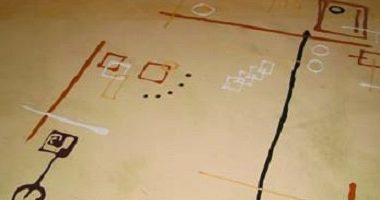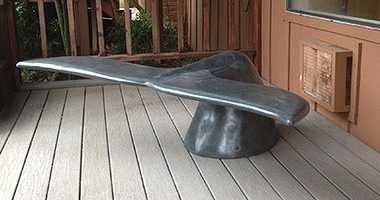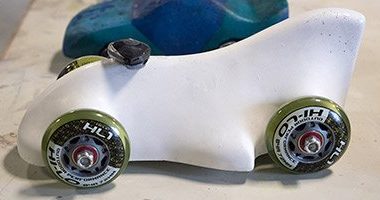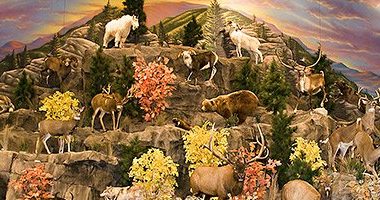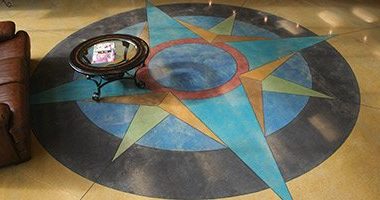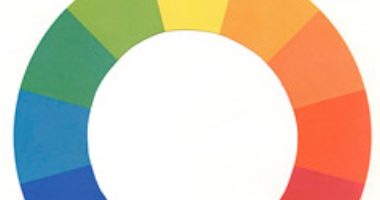When trying to come up with designs, “Don’t be afraid to look at artwork and transfer that design onto a floor,” suggests Gary Jones of Colormaker Floors. “It can be part of a picture, as little as one square inch.”
Concrete Art
Concrete art involves concrete and other cement-based materials to fabricate or coat surfaces where color, texture and shapes are key elements of a design.
Tsunami-inspired concrete art
Steven Ochs and Gerald Taylor, hoping to inspire others to lend a helping hand to tsunami victims, created this concrete composition that shows the power and determination of children everywhere.
Concrete Artisan Reflects on Series Focused On Design Elements
The first thing designers should consider is the shape of the given work space and how to divide the space to create a striking and balanced composition.
A Concrete Bench in the Shape of a Whale’s Tail
Jenkins offered a rock bench as a gesture of friendship, but the biologist wouldn’t accept it without his wife’s approval. Turns out, the wife desired a bench in the shape of a whale’s tail.
Magicraftsman: Roch Fautch, Spokane, Washington
Growing up in the mountains on a remote piece of property near Spokane, Washington, was just the setting needed to instill a limitless imagination, work ethic and determination into Roch (pronounced Rock) Fautch.
Epic Concrete Derby Cars
50 concrete-minded attendees gathered for a healthy dose of fun and some hands-on creating so they could learn about materials and techniques to improve their style and technical skill.
Decorative Concrete Displays in Cabela’s
Cabela’s, a national retailer of hunting, fishing and outdoor gear, designs its stores with elaborate dioramas of outdoor scenes teeming with life. Besides taxidermists, artists and landscapers, the chain has come to rely on the talents of decorative concrete professionals to help bring these displays to life.
How to Create Unity when Using Multiple Colors on Concrete
Standing alone, a color is amoral — entirely relative to what surrounds it. This extends not only to the colored border around your design, but also to the walls and ceilings in your peripheral vision when you glance at the floor.
Make Your Own Color Wheel
You will need a few basics to create your own color wheel – an artist’s acrylic paint in yellow, blue, red, black and white, several, 3/4 inch wide, flat bristle brushes, 2 14 x 14 inch poster boards, a compass, a pencil, paper plates, scap paper and glue.
Pitch-Perfect Concrete
Troy Oliver graduated from the Concrete Industry Management program at Middle Tennessee State University in 2012, and was able to help pay for his degree by selling his extensive collection of vinyl records and other music memorabilia.
